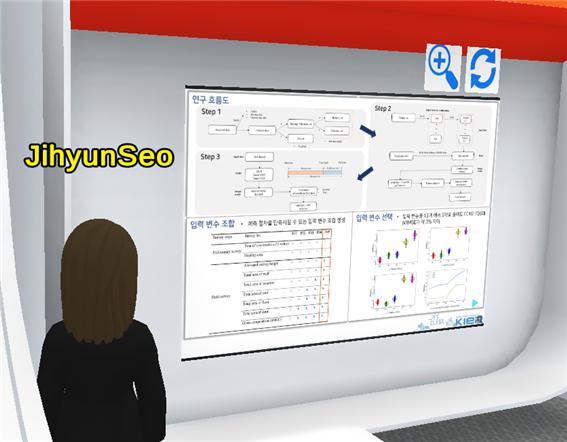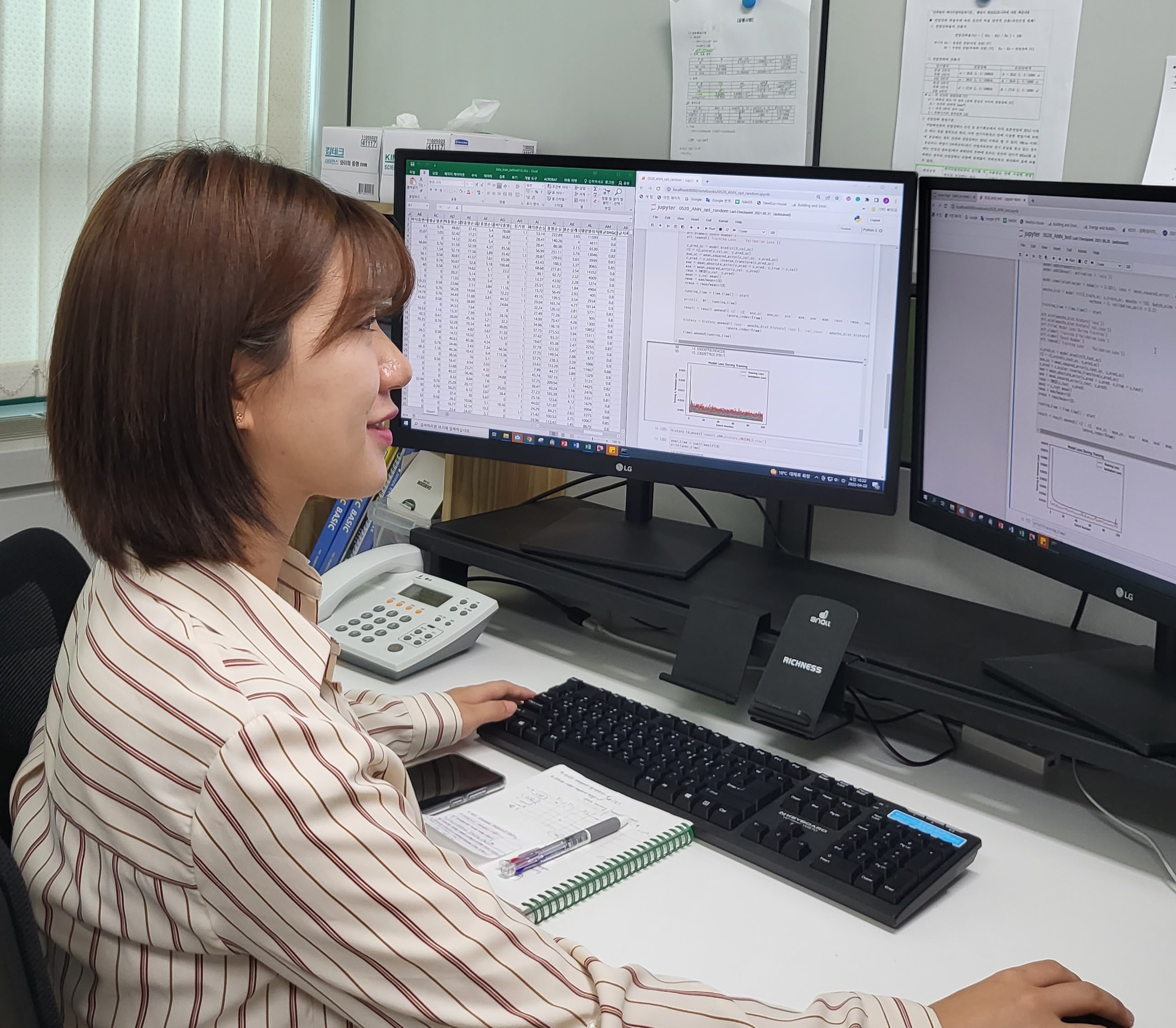- Date
- 2022-04-25
- Views
- 1,336
Seo Ji-hyun, Academic Research Student of the Energy ICT Convergence Research Group
Seo Ji-hyun, a student at the Energy ICT Convergence Research Group, was recognized for his excellent research skills as a leader in the "Data-driven approach to predicting the energy performance of residential buildings using minimal input data" in the top 5%.
1. How did you start your research?
Energy diagnosis is essential to understand the current state of the building in the project to improve the energy performance of the building. However, it was difficult to apply the existing energy diagnosis method in large-scale projects, so we tried to find a way to reduce time and labor.
2. How was the research process?
Input variables for energy performance prediction were organized and a combination of five input variables was generated for each energy diagnosis process. The combination of input variables was applied to the Multiple Linear Regression (MLR), Artificial Neural Network (ANN), and Support Vector Regression (SVR) models to select an appropriate combination. F05 was selected as the input variable of this study, as the total input variable F01 (13 input variables) and the NRMSE (Normalized Root Mean Square Error) of F05 (5 input variables), which is the input variable, differed by only 3%. Hyperparameters of each prediction model were adjusted to fit F05, and each model was compared in terms of accuracy and time. As a result, the ANN model took the least time, resulting in high accuracy. Finally, a case study was conducted as a standard house for old age in Korea. The relative error with the actual value was 1.4%, showing high prediction accuracy.
3. Were there any difficulties or obstacles during the study?
In AI, the number and quality of data sets are the most important because they train models with data. However, at the beginning of the study, the data preprocessing process was overlooked, and the prediction model showed low accuracy. The cause of this problem was mentioned by the advisor (Kim Jong-hoon, the lead researcher), and fellow researchers gave advice on the preprocessing process. By reflecting this, outliers and missing values were removed, and the accuracy of the prediction model could be secured.
4. What is the difference between this achievement?
This study focused on extracting minimal input variables to shorten the energy diagnosis process. Most of the studies to predict the energy performance of buildings by applying AI were predicted by building groups or individual buildings. However, since apartment houses account for more than half of the domestic residential building types, and each household has a different energy performance, a model was created to predict individual households.
5. The most memorable thing in my research life
I have many good memories while I was a researcher, but the participation in the 2021 KIER Academic Festival using Metaverse is the most memorable. I've heard of Metaverse, but it was my first time using it at an academic festival. It felt new to make my own avatar and present my research results in a virtual space. There was no opportunity to interact with many people due to COVID-19, and it was a good opportunity to overcome this point by using Metaverse and share opinions with students in various fields.

6. What's your goal or follow-up research plan?
Building energy is influenced by many external factors. However, it is difficult to measure these factors and apply them to performance assessments with current methods. Data-based methods can solve the problems of these traditional approaches and look at them from a new perspective. In the future, we will develop a building energy performance prediction model that considers factors that are difficult to measure using data-based methods, and conduct research to predict not only individual building sizes but also building groups and urban sizes.
